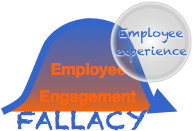How Poor Technical Communication Hurts Business reveals that firms regularly increase their customer service and marketing costs by sending inept letters, emails, technical instructions, and other communications to their customers and employees. It shows how they can increase profit by making these communications more user-centric.
 Banks, physicians, retailers, and many others routinely send poor instructional technical communications to their customers, resulting in high customer service costs, high return costs, high customer churn, and many related costs. These letters, emails, web pages, and other communications are produced by writers who show little insight into customers’ journeys that include the product or service. Banks, physicians, retailers, and many others routinely send poor instructional technical communications to their customers, resulting in high customer service costs, high return costs, high customer churn, and many related costs. These letters, emails, web pages, and other communications are produced by writers who show little insight into customers’ journeys that include the product or service.
The same problem occurs when firms communicate to their employees, and this results in employees’ anxiety and lost productivity (think about choosing your “benefits”) as well as HR staff time, IT staff time, management time, and employee dissatisfaction. It hurts the relationship that most employers try to develop with their employees.
[…]
 Employee engagement and experiential social media shares my insights into one of the biggest challenges faced by business today—the employee engagement crisis, and how firms can change the game. Fewer than a quarter of employees are engaged, a slightly smaller quarter are “actively disengaged,” and the majority is blasé and punches the clock. Employee engagement and experiential social media shares my insights into one of the biggest challenges faced by business today—the employee engagement crisis, and how firms can change the game. Fewer than a quarter of employees are engaged, a slightly smaller quarter are “actively disengaged,” and the majority is blasé and punches the clock.
If you’d like to watch this post instead of reading it, click the thumbnail button.
[…]
 This Drive to Trust trailer offers a quick behind-the-scenes look into why I’m doing it. Drive to Trust is CSRA’s major initiative this year. We’re partnering with firms in all kinds of industries to show that trust-building in digital public achieves marketing goals much, much better than promotion. These daring organizations will learn how to change how they relate to people, and they’ll become much more competitive. This Drive to Trust trailer offers a quick behind-the-scenes look into why I’m doing it. Drive to Trust is CSRA’s major initiative this year. We’re partnering with firms in all kinds of industries to show that trust-building in digital public achieves marketing goals much, much better than promotion. These daring organizations will learn how to change how they relate to people, and they’ll become much more competitive.
If you’d like to watch this post instead of reading it, just click the thumbnail button.
[…]
 How CSRA Builds Trust at Scale shares some of the most surprising and useful things I’ve learned while pioneering experiential social media since 2006. In this post, I’ll reveal how experiential social media teams build trust by breaking some rules in social media. How CSRA Builds Trust at Scale shares some of the most surprising and useful things I’ve learned while pioneering experiential social media since 2006. In this post, I’ll reveal how experiential social media teams build trust by breaking some rules in social media.
If you’d like to watch this post instead of reading it, click the thumbnail button!
[…]
 Three Powerful Experiential Social Media Lessons shares three surprising breakthrough insights I’ve learned while practicing experiential social media. This is one of the videos I’ve made to share some of the most useful things I’ve learned since 2006. Three Powerful Experiential Social Media Lessons shares three surprising breakthrough insights I’ve learned while practicing experiential social media. This is one of the videos I’ve made to share some of the most useful things I’ve learned since 2006.
If you’d like to watch this post instead of reading it, click the thumbnail button!
[…]
 In Healing Business, I’ll share why I think business needs healing and how CSRA is doing it with experiential social media. Business is wounded from a human point of view because it’s become very impersonal; large organizations don’t mean to, but they treat employees and customers as numbers because they don’t know or trust them. Experiential is a practical way to change that. In Healing Business, I’ll share why I think business needs healing and how CSRA is doing it with experiential social media. Business is wounded from a human point of view because it’s become very impersonal; large organizations don’t mean to, but they treat employees and customers as numbers because they don’t know or trust them. Experiential is a practical way to change that.
If you’d like to watch this post instead of reading it, click the thumbnail button!
[…]
 [Updated] Many businesses live in fear, and how to break free reveals how fear and risk can be sharply reduced by increasing trust among employees, customers and partners. [Updated] Many businesses live in fear, and how to break free reveals how fear and risk can be sharply reduced by increasing trust among employees, customers and partners.
I have learned many surprising things while practicing experiential social media, but one of the most astounding is the realization that most business practices, especially those that concern people, are grounded in fear and mistrust. This ties businesses in knots, but few people realize it because it’s accepted as normal. This post aims to open your eyes, so you can start noticing how fear and mistrust operate in your firm. Then I’ll offer numerous ideas that can help you to reduce fear and risk by increasing trust.
[…]
 Ethnographic research for design explains how to use advances in ethnographic research of social media to design products, services, experiences… anything—while getting better results at lower risk. Ethnographic research of social media is breakthrough for designers in the “design stack” in which I’ve includedArchitecture/Interior Design, Product Design, User Experience Design/Interaction Design, UX Strategy, Service Design and Customer Experience Design. Ethnographic research for design explains how to use advances in ethnographic research of social media to design products, services, experiences… anything—while getting better results at lower risk. Ethnographic research of social media is breakthrough for designers in the “design stack” in which I’ve includedArchitecture/Interior Design, Product Design, User Experience Design/Interaction Design, UX Strategy, Service Design and Customer Experience Design.
Designers in all fields lament clients’ resistance to funding robust research. Traditional design research methods are often grounded in asking proposed users explicit questions, and self-reported responses vary significantly from actual behavior despite respondents’ best intentions. Similarly, shadowing, service safaris, “a day in the life,” and other analog research methods are costly and slow. Sample sizes are necessarily small because scaling analog methods greatly multiplies the budget and length of the research phase. Ethnographic research of social media changes the game because it studies proposed users’ actual behavior in digital public when they’re having heated discussions about the outcomes they want when the proposed product, service, or process is useful to them. It […]
 Ethnographic research for social media initiatives shows how ethnography can change the rules of social media programs in marketing, customer service, product development, recruiting and others. Ethnographic research enables teams to understand the people who are most important to your firm so they can relate to them at a completely different level. Moreover, interacting in digital public activates the network effect and the annuity effect, so it’s very scalable. Since your teams interact in digital public, where a far larger group of like people observes the interactions, they influence a large group of people and build relationships with them. People start trusting your firm, preferring your firm, and doing more business with you. See the Trust Business Chain Reaction and infographic for how it monetizes. Ethnographic research for social media initiatives shows how ethnography can change the rules of social media programs in marketing, customer service, product development, recruiting and others. Ethnographic research enables teams to understand the people who are most important to your firm so they can relate to them at a completely different level. Moreover, interacting in digital public activates the network effect and the annuity effect, so it’s very scalable. Since your teams interact in digital public, where a far larger group of like people observes the interactions, they influence a large group of people and build relationships with them. People start trusting your firm, preferring your firm, and doing more business with you. See the Trust Business Chain Reaction and infographic for how it monetizes.
Ethnographic research for social media initiatives is a game-changer for customer experience and digital transformation programs in multiple phases. It’s faster, less costly, and scalable. It provides an unprecedented combination of qualitative and quantitative research.
[…]
 The Employee Engagement Fallacy reveals that most literature, papers, and methods are built on faulty Industrial Economy employment attitudes, and it provides an approach that uses experiential social media to help reframe employment and performance. The Employee Engagement Fallacy reveals that most literature, papers, and methods are built on faulty Industrial Economy employment attitudes, and it provides an approach that uses experiential social media to help reframe employment and performance.
Although the idea of “employee engagement” can be a rare opportunity to increase competitiveness, its practice is compromised by well intended but flawed logic.
Here’s the fallacy: Employee “engagement” is the result of employees’ experiences while they’re working at employers. Few engagement programs focus on employees’ experiences, so they fall short.
Engagement is not achieved by a program or initiative that focuses on the outcome. Employers see much more success at achieving the result when they focus on empowering the experiences their employees want when they decide to work at the employer. Experience is the motor of engagement, so empowering experience is the first step of raising productivity and lowering employment costs, two common employee engagement goals. Here’s how it’s done.
[…]
|
|
 Banks, physicians, retailers, and many others routinely send poor instructional technical communications to their customers, resulting in high customer service costs, high return costs, high customer churn, and many related costs. These letters, emails, web pages, and other communications are produced by writers who show little insight into customers’ journeys that include the product or service.
Banks, physicians, retailers, and many others routinely send poor instructional technical communications to their customers, resulting in high customer service costs, high return costs, high customer churn, and many related costs. These letters, emails, web pages, and other communications are produced by writers who show little insight into customers’ journeys that include the product or service.
 Employee engagement and experiential social media shares my insights into one of the biggest challenges faced by business today—the employee engagement crisis, and how firms can change the game. Fewer than a quarter of employees are engaged, a slightly smaller quarter are “actively disengaged,” and the majority is blasé and punches the clock.
Employee engagement and experiential social media shares my insights into one of the biggest challenges faced by business today—the employee engagement crisis, and how firms can change the game. Fewer than a quarter of employees are engaged, a slightly smaller quarter are “actively disengaged,” and the majority is blasé and punches the clock. This Drive to Trust trailer offers a quick behind-the-scenes look into why I’m doing it. Drive to Trust is CSRA’s major initiative this year. We’re partnering with firms in all kinds of industries to show that trust-building in digital public achieves marketing goals much, much better than promotion. These daring organizations will learn how to change how they relate to people, and they’ll become much more competitive.
This Drive to Trust trailer offers a quick behind-the-scenes look into why I’m doing it. Drive to Trust is CSRA’s major initiative this year. We’re partnering with firms in all kinds of industries to show that trust-building in digital public achieves marketing goals much, much better than promotion. These daring organizations will learn how to change how they relate to people, and they’ll become much more competitive. How CSRA Builds Trust at Scale shares some of the most surprising and useful things I’ve learned while pioneering experiential social media since 2006. In this post, I’ll reveal how experiential social media teams build trust by breaking some rules in social media.
How CSRA Builds Trust at Scale shares some of the most surprising and useful things I’ve learned while pioneering experiential social media since 2006. In this post, I’ll reveal how experiential social media teams build trust by breaking some rules in social media. Three Powerful Experiential Social Media Lessons shares three surprising breakthrough insights I’ve learned while practicing experiential social media. This is one of the videos I’ve made to share some of the most useful things I’ve learned since 2006.
Three Powerful Experiential Social Media Lessons shares three surprising breakthrough insights I’ve learned while practicing experiential social media. This is one of the videos I’ve made to share some of the most useful things I’ve learned since 2006. In Healing Business, I’ll share why I think business needs healing and how CSRA is doing it with experiential social media. Business is wounded from a human point of view because it’s become very impersonal; large organizations don’t mean to, but they treat employees and customers as numbers because they don’t know or trust them. Experiential is a practical way to change that.
In Healing Business, I’ll share why I think business needs healing and how CSRA is doing it with experiential social media. Business is wounded from a human point of view because it’s become very impersonal; large organizations don’t mean to, but they treat employees and customers as numbers because they don’t know or trust them. Experiential is a practical way to change that. [Updated] Many businesses live in fear, and how to break free reveals how fear and risk can be sharply reduced by increasing trust among employees, customers and partners.
[Updated] Many businesses live in fear, and how to break free reveals how fear and risk can be sharply reduced by increasing trust among employees, customers and partners. Ethnographic research for design explains how to use advances in ethnographic research of social media to design products, services, experiences… anything—while getting better results at lower risk. Ethnographic research of social media is breakthrough for designers in the “design stack” in which I’ve includedArchitecture/Interior Design, Product Design, User Experience Design/Interaction Design, UX Strategy, Service Design and Customer Experience Design.
Ethnographic research for design explains how to use advances in ethnographic research of social media to design products, services, experiences… anything—while getting better results at lower risk. Ethnographic research of social media is breakthrough for designers in the “design stack” in which I’ve includedArchitecture/Interior Design, Product Design, User Experience Design/Interaction Design, UX Strategy, Service Design and Customer Experience Design. Ethnographic research for social media initiatives shows how ethnography can change the rules of social media programs in marketing, customer service, product development, recruiting and others. Ethnographic research enables teams to understand the people who are most important to your firm so they can relate to them at a completely different level. Moreover, interacting in digital public activates the network effect and the annuity effect, so it’s very scalable. Since your teams interact in digital public, where a far larger group of like people observes the interactions, they influence a large group of people and build relationships with them. People start trusting your firm, preferring your firm, and doing more business with you. See the Trust Business Chain Reaction and infographic for how it monetizes.
Ethnographic research for social media initiatives shows how ethnography can change the rules of social media programs in marketing, customer service, product development, recruiting and others. Ethnographic research enables teams to understand the people who are most important to your firm so they can relate to them at a completely different level. Moreover, interacting in digital public activates the network effect and the annuity effect, so it’s very scalable. Since your teams interact in digital public, where a far larger group of like people observes the interactions, they influence a large group of people and build relationships with them. People start trusting your firm, preferring your firm, and doing more business with you. See the Trust Business Chain Reaction and infographic for how it monetizes.